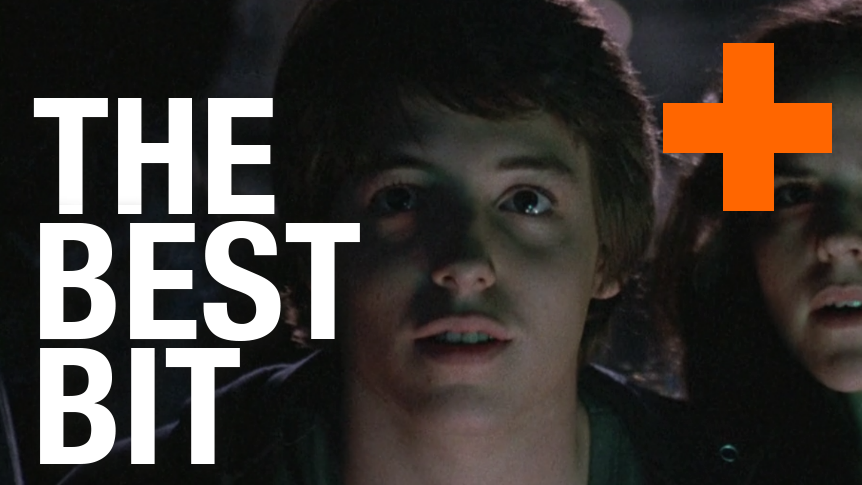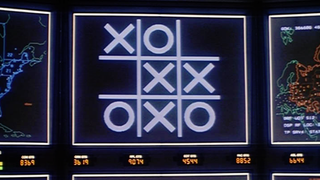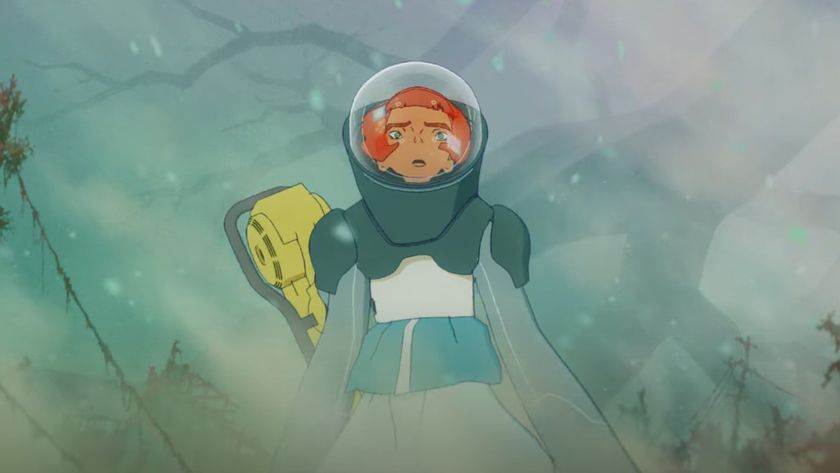"Perfectly sums up the self-destructive nature of war" - the WOPR's realization is The Best Bit of WarGames

WarGames, the story of a young hacker who almost starts World War 3 after he accidentally accesses a military supercomputer, is one of cinema's greatest time capsules of the '80s. It stars Matthew Broderick just before he was in Ferris Bueller's Day Off and Ally Sheedy shortly before she was in The Breakfast Club, it's packed with blippy synth music, and it's even got a musical montage where David Lightman (played by Broderick) conducts meticulous research through library archives instead of just hopping onto Google. Despite its age, WarGames portrayal of old-school hacking is still one of the most authentic to the culture, with the brute force methods of war dialing and the interface-free use of command prompts. But the part everyone remembers is when WarGames eschews era-appropriate realism and dips into a bit of Hollywood excess to ramp up the excitement: when the WOPR computer learns in real-time that there are no winners in the game of Global Thermonuclear War.
This is everything the climax of a movie ought to be: a flashy, thought-provoking realization of our hero's greatest strengths. But it also plays into any computer enthusiast's fascination with artificial intelligence, and the genesis of program-driven sentience that could one day give rise to robots with emotions. Lightman, being the bright, crafty tech whiz he is, realizes that NORAD's War Operation Plan Response computer doesn't fully understand the concept of a stalemate - so what better game to teach a lesson in tactical futility than Tic-Tac-Toe? The notion that a teenage hacker ends up calling the shots in a command center full of professional engineers leads to some purposely goofy moments to cut the tension, like the Southern-accented brass General Beringer chiming in with "I'd piss on a sparkplug if I thought it'd do any good", and some random military official blurting out "Put X in the center square!" as if his deep insight will give Lightman an advantage. But it's when Lightman sets the number of players to zero - forcing the computer to compete against itself - that the magic happens.

Like an engine slowly revving up into overdrive, WOPR's self-challenging game of Tic-Tac-Toe intensifies with each successive tie, the Pong-like blips and boops of its X and O placement rapidly building into a frenzy. The brilliant use of cuts between the quickening Tic-Tac-Toe grid and WOPR's decryption of missile launch codes - so it can enact its simulation with real explosives without the need for human permission - cranks up the suspense in a crescendo until BANG, an explosion kills the lights and the entire underground base in plunged into darkness. Power outages are to be expected whenever you force a machine to compute the answer to an impossible problem until it finally reaches an epiphany.
Now it's time for WOPR to apply its newfound understanding. The virtual Tic-Tac-Toe board is swept aside for a wireframe map of the world dotted with every known military outpost, and the WOPR launches into a simulation resembling Missile Command on a global scale. The imagery used to depict WOPR's projections for World War 3 is so wonderfully distinct: dotted lines shooting out from each nation like sprouting roots in time-lapse nature footage, each representing a nuclear payload that creates a blindingly white, perfect circle representing absolute annihilation. It's a look so distinct, it inspired an entire game devoted to that exact aesthetic - DEFCON, cleverly named after the threat levels of the alert system that's frequently referenced throughout WarGames.
WOPR's demonstration of mutually assured destruction plays out again and again, with named simulations that start simple - USSR First Strike and US First Strike - and escalate into bizarre possibilities like Zaire Alliance and Thai Subversion. Each one flashes onscreen to the same result, a "Winner: None" end state, until NORAD's HQ is bathed in a strobing light. Then suddenly, silence, broken by the high-pitched chirping voice of the WOPR as if it's regained conscious from a conflict-obsessed frenzy. Its text-to-speak admission is unforgettable: "A strange game. The only winning move is not to play." That quote still resonates with WarGames' audience, because it so perfectly sums up the self-destructive nature of war - or even something as simple as choosing sides when neither outcome will make you happy.
WarGames' finale is still poignant to this day, serving as a reminder that there's nothing to be gained from a world where every nation's packing nukes, and that any world power would be dooming not only itself, but the entire planet by launching a preemptive nuclear strike. I also suspect that WarGames' depiction of an AI frantically teaching itself a life lesson is what fueled the recent popularity of the seebotschat Twitch channel, with audience members hoping to witness a spark of self-realization born from a chatbot talking to itself for long enough. If anything, WarGames' climactic scene could be seen as a comfort: either World War 3 isn't going to happen, or we'll all be vaporized the moment it starts. Winner: None.
The Best Bit focuses on the special moments, scenes, and elements of movies and TV that make them worth watching. It arrives every Wednesday at 0900 PST / 1700 GMT. Follow @12DOVE on Twitter for updates.
Sign up for the Total Film Newsletter
Bringing all the latest movie news, features, and reviews to your inbox
Lucas Sullivan is the former US Managing Editor of 12DOVE. Lucas spent seven years working for GR, starting as an Associate Editor in 2012 before climbing the ranks. He left us in 2019 to pursue a career path on the other side of the fence, joining 2K Games as a Global Content Manager. Lucas doesn't get to write about games like Borderlands and Mafia anymore, but he does get to help make and market them.
















